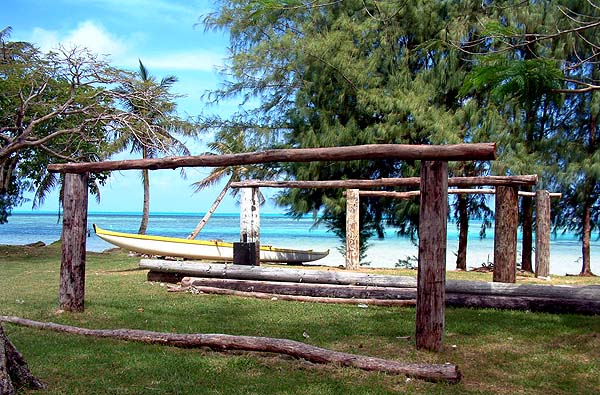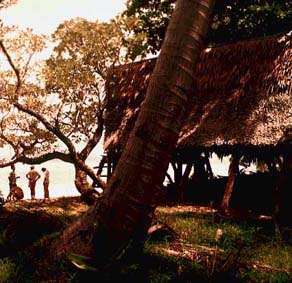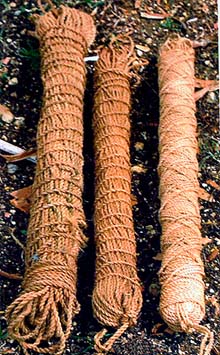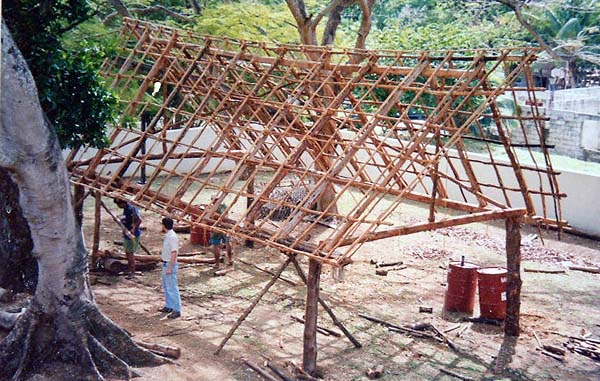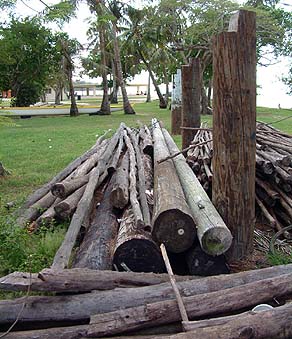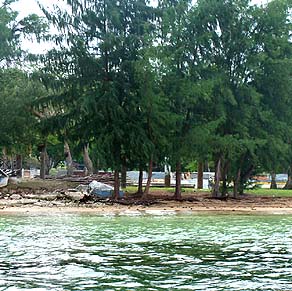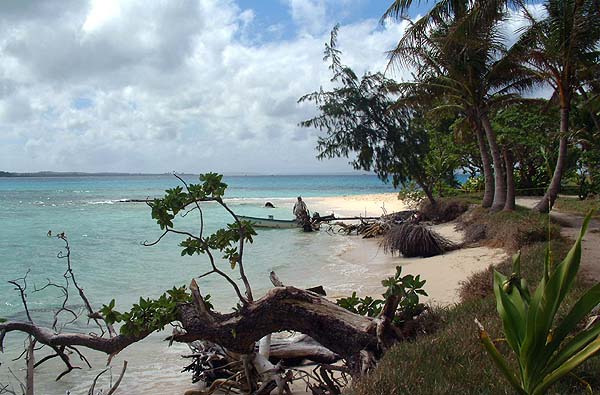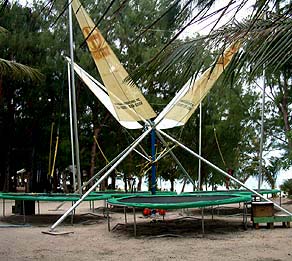 |
 |
 |
|||||
|
|
|
|
|
|
|
|
|
|
|
|||||||
|
|
|
|
The Talaabwogh Falawel under reconstruction
|
|
“The utt was recently built three years ago,” Dan says. “That’s when the people from the outer islands of Yap—Puluwat and Satawal—when they came in. They navigated from their island to our island of Saipan. And then that’s when we started building the utt, so that these people can come and live in the utt. There was no utt before that. Before that time, there was a plan that these navigators from outer islands of Yap would be coming in. But they would not come if there was no utt."
|
||
|
|
||
“The utt is the place for them to sleep. They cannot sleep at somebody’s house or their own house, for example. When they arrive on the island, they cannot go and stay in a house, not when they come from navigation. You have to stay in the utt for three to five days. So that’s the reason why they built that utt. "We had an utt in our time, when our generation was young—when
I was five, six, seven, years old, But we didn’t know the meaning
of the utt, we didn’t really understand what an utt is.
But when I started traveling to Yap, then that’s the time I learned
what an utt really signifies.”
|
|
|
"In the year 2000 when we planned to bring six ocean going canoes here, three from Puluwat and three from Satawal, that was the first time in more than 40 years that we put up again a local thatch-type men’s house. When I say local, I mean we tried to use local materials like coconut fronds for the roof as much as possible. "We now have telephone poles that we requested from some government agency—we did that because they last longer. They are preserved—a lot of tar is infused into the wood, and being near the ocean like that, it lasts a lot longer than if we were to use coconut tree or Australian Pine and native plants. “We got some traditional coconut-fiber rope from Satawal, and we got some from the outer islands of Yap, the Central Carolines, and some was made here. We also used fishing lines, primarily the Japanese long-line type. They’re coated with tar, and so they last long too."
|
|
|
|
|
“Building the utt has been a very valuable cultural lesson for us because we’d lost the practice for nearly 40 years; we thought we’d never put it back in place again. But we got all anxious and willing to do it when we were planning to bring these six canoes. It was the first time in over a hundred years that we brought canoes into the village of Tanapag, so it was a very dramatic event for us. "A lot of people came up and greeted us. All our relatives and people of this village, who one way or another are of Carolinian descent, were down there at the beach. This was an occasion that lasted nearly two months. We had to host our guests. We hosted Mau, who is from Satawal and Chief Manipe from Puluwat."
|
||
|
|
||
“They’re trying to teach the local people here, especially the Carolinians, how to navigate,” Dan says. “How to read the stars, how to read the weather, the skies, and to tell if it’s good to navigate this week or next week or next month. "Those are the things that the Carolinian Affairs office is trying to get back, the culture of navigation. Of course it’s good." “But that utt has been demolished since last year, because of termites in the wood. And all those leaves were rotten. So right after you demolish the utt, you have to build it right after that. That way you can still preserve the culture. Mr. Igitol—he is one of our chiefs here in the village—if he’s interested in bringing back the culture, that utt should be there.”
|
|
|
“Nobody touches the utt because nobody knows how to build it. Now, if some guys are asked to build the utt, you have to pay them. But in our culture, nobody got paid. You have to build the utt voluntarily. But seems like nobody’s interested in building the utt again.” “It’s going to cost $10,000-$12,000 to rebuild it,” Ben remarks, “probably more. Our labor is free. But a lot of the materials need to be bought, and that’s why we need the money. For example, we need hand-woven ropes. “We are going to try to put our utt back again. We are waiting for our paramount chief, Victorino Igitol. He got sick, and so we’re kind of waiting for him to get back on his feet and tell us when to begin.”
|
|
|
|
|
“Louisa Sablan was mentioning the legend of Chief Aghurubw, who was one of the navigators,” Lino says,“Chief Aghurubw is buried on the island of Managaha. That is a sacred island as far as the Carolinians are concerned. The island is still considered sacred to the Carolinians today—very much so. It’s no different from going to the church, how you respect the church, or when you go to the cemeteries, how you respect the graveyards and cemeteries. It is very sacred."
|
||
|
|
||
“Managaha, we call it Ghalaghal in Carolinian. Mrs. Sablan doesn’t like the tourism that is there now. She feels that it's an intrusion interrupting some of our ceremonial things. She doesn't like people stepping over the graveyards there. “We do still have the burning of possessions of the deceased. We call that firoro in Carolinian. It is still being practiced today, and it’s a very sacred thing. We Southern Carolinians still do that. "But because the way the Marianas and Saipan in particular have developed, there are a lot of infringements on our traditional ways of doing things. Especially with the development.”
|
|
|
|
|
|
With these thoughts, we get ready to depart from Tanapag.
|
||
|
|
||
|
|
|
|
|
|

|
| Tanapag Home | Map Library | Site Map | Pacific Worlds Home |
|
|
|
|

|
|
|
|||
| Copyright 2003 Pacific Worlds & Associates • Usage Policy • Webmaster |
|||
